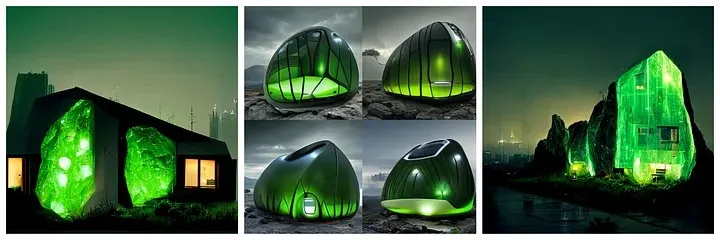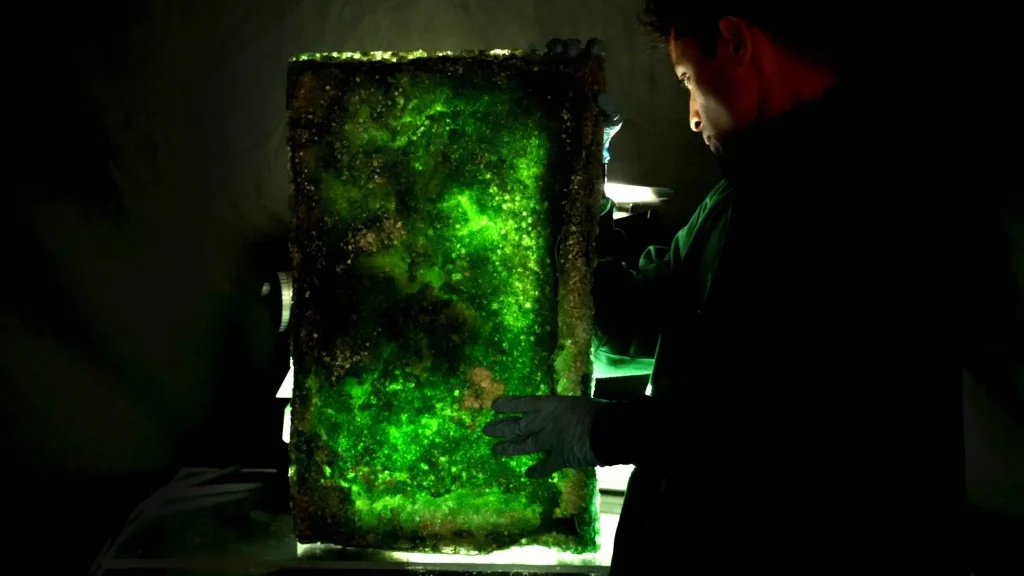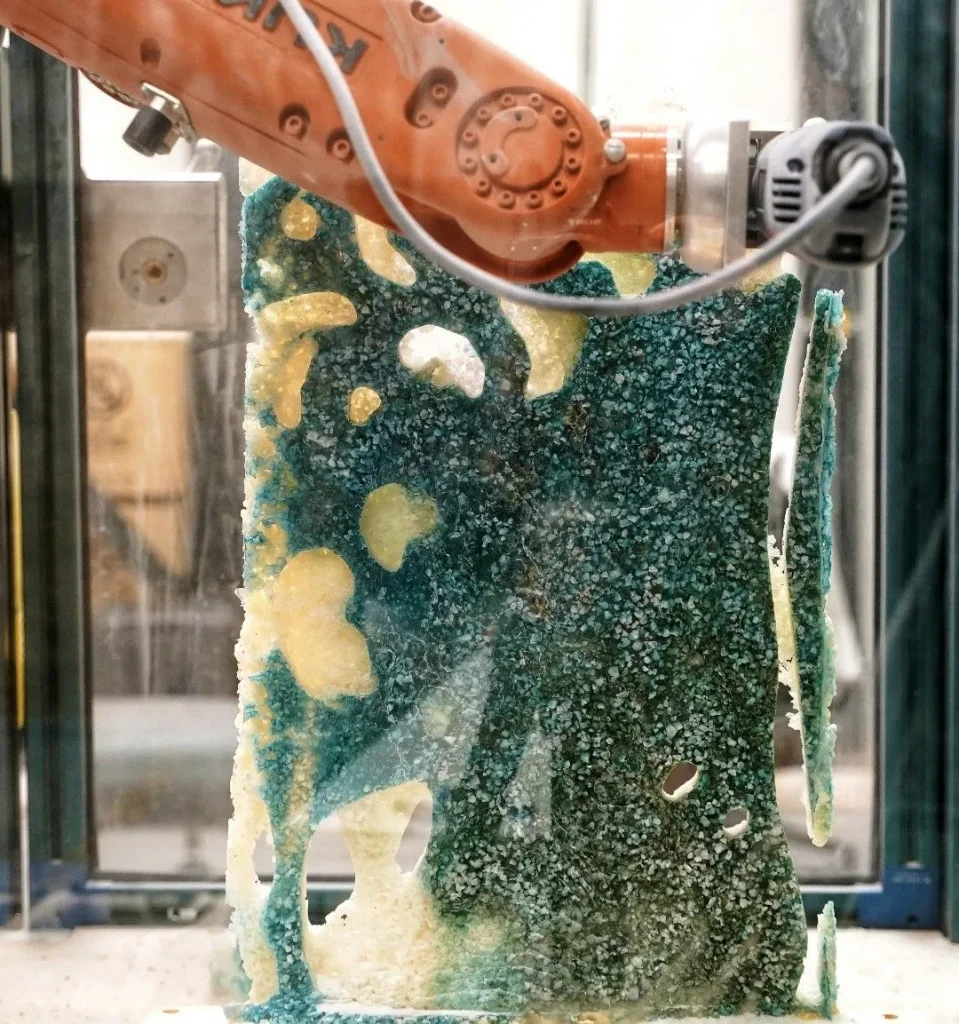Prantar Tamuli, a Master’s student in Biochemical Engineering at University College London (UCL), has developed a groundbreaking construction biomaterial that utilizes living microorganisms to capture carbon dioxide from the atmosphere. This innovative material, known as C-ELM (cyanobacterial engineered living material), has the potential to significantly reduce the carbon footprint of the construction industry if mass-produced and widely adopted.

Prantar recently unveiled the C-ELM material during an art installation at St Andrews Botanic Garden in Scotland. The material incorporates living cyanobacteria into translucent panels that can be installed on the interior walls of buildings. As these microorganisms grow through photosynthesis, they absorb carbon dioxide from the air, contributing to carbon sequestration.
Environmental Impact and Benefits
Prantar aims to transform the construction industry by converting it from a major carbon-emitting activity into a leading carbon-sequestering process. The C-ELM material operates through a biomineralization process where captured CO2 reacts with calcium to form calcium carbonate, effectively trapping the carbon. Each kilogram of C-ELM can sequester up to 350 grams of CO2, while traditional concrete emits around 500 grams of CO2 for the same weight. Thus, a 150-square-meter wall covered in C-ELM panels could sequester approximately one tonne of CO2.

Professor Marcos Cruz of UCL’s Bartlett School of Architecture and co-director of the Bio-Integrated Design Programme, emphasized the substantial potential of this biomaterial. “If mass-produced and widely adopted, C-ELM could dramatically reduce the carbon footprint of the construction industry. The goal is to scale up its production and optimize its performance for construction applications,” he noted.
Development and Innovation
Prantar developed the C-ELM material during his MSc in Bio-Integrated Design, creating a new process for culturing cyanobacteria during the COVID-19 lockdown without access to conventional lab equipment. Dr. Brenda Parker, co-director of the Bio-Integrated Design Programme at UCL, praised the innovative approach. “Breaking down traditional disciplinary silos has enabled discoveries like this. It is an exciting moment where biotechnology has the potential to transform sustainable building design and construction.”

A patent for the C-ELM technology has been filed by UCL Business. Prantar’s inspiration came from studying stromatolites—ancient natural structures formed by algal mats. He focused on the species Kamptonema animale, a photosynthetic cyanobacteria that grows in long strands, facilitating its integration into the panels. The resulting calcium carbonate strengthens and reinforces the panels.
Design and Application

The C-ELM panels offer several benefits for building design and construction. They are lightweight, sound-absorbing, translucent enough to allow light transmission, and thermally insulating, which enhances the energy efficiency of buildings. The panels were first showcased at the ‘Bioscope’ pavilion at St Andrews Botanic Garden, designed by Studio Biocene, highlighting low-carbon and low-impact construction methods inspired by natural environments.
